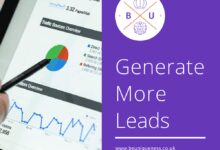Leads Definition: 7 Powerful Insights You Must Know Now
Ever wondered what a lead really is in today’s fast-paced digital world? The leads definition isn’t just about names and emails—it’s the heartbeat of every successful business strategy. Let’s break it down in simple, powerful terms.
Leads Definition: What Exactly Is a Lead?

At its core, the leads definition refers to a person or organization that has shown interest in your product or service. This interest can come in many forms—filling out a contact form, downloading an ebook, subscribing to a newsletter, or even engaging with your content on social media. A lead is not yet a customer, but they are a potential one.
The Basic Criteria of a Lead
For someone to qualify as a lead, certain conditions must be met. First, there must be identifiable contact information—like an email address or phone number. Second, there should be a demonstrated interest in what you offer. This could be as simple as clicking on a paid ad or attending a webinar.
- Contact information is available
- Interest in product/service is evident
- Action has been taken (e.g., form submission)
Without these elements, a prospect remains anonymous and cannot be nurtured effectively. According to Investopedia, a lead is “a potential sales contact,” which underscores the importance of intent and identifiability.
Leads vs. Prospects: Understanding the Difference
While often used interchangeably, leads and prospects are not the same. A lead is the initial stage—someone who has expressed interest. A prospect, however, is a lead that has been qualified. This means they meet specific criteria such as budget, authority, need, and timeline (commonly known as BANT).
“Not all leads are prospects, but all prospects start as leads.” — Sales Enablement Expert
For example, if someone downloads a free guide on home gardening, they are a lead. But if they also own a landscaping business, have a budget for tools, and are actively looking to buy—then they become a qualified prospect.
Why the Leads Definition Matters in Modern Marketing
Understanding the precise leads definition is crucial because it shapes how businesses design their marketing and sales funnels. Misclassifying leads can lead to wasted resources, poor targeting, and low conversion rates. A clear definition ensures alignment between marketing and sales teams.
Alignment Between Sales and Marketing Teams
One of the biggest challenges in business is the disconnect between marketing and sales. Marketing may generate hundreds of leads, but if sales deems them unqualified, friction arises. A shared understanding of what constitutes a lead—and more importantly, a qualified lead—helps bridge this gap.
- Reduces internal conflict
- Improves lead handoff process
- Increases overall conversion efficiency
Companies that align their sales and marketing teams see up to 36% higher customer retention and 38% higher sales win rates, according to HubSpot.
Impact on ROI and Campaign Effectiveness
When you clearly define what a lead is, you can measure the success of your campaigns more accurately. For instance, if your goal is to generate 500 leads per month, but your definition is vague, you might count website visitors as leads—skewing your data. A precise leads definition ensures you’re tracking meaningful interactions.
This clarity directly impacts return on investment (ROI). You can identify which channels bring in high-quality leads and allocate your budget accordingly. Paid ads, content marketing, and social media efforts become more strategic when tied to a solid leads definition.
Types of Leads Based on the Leads Definition
Not all leads are created equal. The leads definition evolves as prospects move through the buyer’s journey. Understanding the different types helps businesses prioritize efforts and personalize communication.
Marketing Qualified Leads (MQLs)
Marketing Qualified Leads (MQLs) are individuals who have engaged with your marketing content and meet certain behavioral criteria. For example, they may have visited your pricing page multiple times, downloaded a whitepaper, or attended a demo webinar.
- Engaged with content
- Exhibited buying signals
- Not yet ready for direct sales contact
MQLs are nurtured through email campaigns, retargeting ads, and educational content until they are ready to speak with a sales representative.
Sales Qualified Leads (SQLs)
Sales Qualified Leads (SQLs) are MQLs that have been further vetted and deemed ready for direct sales outreach. They often meet specific qualification criteria such as budget availability, decision-making authority, and a clear timeline for purchase.
The transition from MQL to SQL is a critical handoff point. It requires clear communication between marketing and sales teams to ensure no opportunities are lost. Tools like CRM systems (e.g., Salesforce) help automate and track this process.
leads definition – Leads definition menjadi aspek penting yang dibahas di sini.
“An SQL is not just interested—they’re ready to buy.” — CRM Industry Report
Product Qualified Leads (PQLs)
Product Qualified Leads (PQLs) are a newer category, especially relevant in SaaS (Software as a Service) businesses. These are users who have experienced the product firsthand—often through a free trial or freemium model—and have demonstrated behaviors indicating they’re likely to convert.
For example, a user who upgrades their account, uses key features, or hits usage thresholds becomes a PQL. This type of lead is highly valuable because their interest is proven through actual product engagement.
- Used the product extensively
- Triggered upgrade prompts
- Exhibited power-user behavior
PQLs often convert faster than traditional leads because the product itself does much of the selling.
How Leads Are Generated: Channels and Strategies
Understanding the leads definition is only half the battle. The next step is knowing how to generate them effectively. Different industries and business models rely on various lead generation channels.
Content Marketing and Lead Magnets
Content marketing remains one of the most effective ways to attract high-quality leads. By offering valuable content—such as blogs, ebooks, webinars, or templates—businesses can capture contact information in exchange for knowledge.
A lead magnet is a free resource offered to visitors in return for their email address. For example, a real estate agency might offer a free home valuation guide. This not only generates leads but also positions the brand as an authority.
- Ebooks and guides
- Free tools or calculators
- Checklists and templates
According to Content Marketing Institute, content marketing generates three times as many leads as traditional marketing, at a much lower cost.
Paid Advertising and Landing Pages
Paid ads on platforms like Google Ads, Facebook, or LinkedIn can drive targeted traffic to optimized landing pages. These pages are designed with a single goal: to convert visitors into leads.
A successful landing page includes a compelling headline, clear value proposition, minimal distractions, and a strong call-to-action (CTA). For example, a SaaS company might run a LinkedIn ad promoting a free trial, leading to a landing page where users enter their email to get started.
“Your landing page is your digital salesperson—it never takes a day off.” — Digital Marketing Expert
Using A/B testing and analytics, businesses can continuously improve conversion rates and lower cost per lead (CPL).
Social Media and Community Engagement
Social media platforms are no longer just for brand awareness—they’re powerful lead generation tools. By engaging with audiences through comments, direct messages, and live streams, businesses can build trust and capture leads organically.
For instance, a fitness coach might host a free Instagram Live workout and invite viewers to sign up for a 7-day nutrition plan. The sign-up form collects emails, turning social engagement into a lead.
- Direct messaging campaigns
- Lead generation forms on Facebook/LinkedIn
- Webinars and live events
LinkedIn’s lead gen forms, for example, allow users to submit their information without leaving the platform, increasing conversion rates by up to 200%, per LinkedIn Marketing Solutions.
Lead Scoring: Prioritizing Based on the Leads Definition
Once leads are generated, not all should be treated equally. Lead scoring is a methodology used to rank leads based on their perceived value. This helps sales teams focus on the most promising opportunities.
Demographic and Firmographic Scoring
This type of scoring evaluates leads based on who they are—job title, industry, company size, location, etc. For B2B companies, firmographic data is especially important.
For example, a cloud storage provider might assign higher scores to IT managers at companies with over 100 employees, as they are more likely to have budget and authority to make purchasing decisions.
leads definition – Leads definition menjadi aspek penting yang dibahas di sini.
- Job title relevance
- Company size and revenue
- Geographic location
Integrating this data into a CRM allows for automated scoring and segmentation.
Behavioral Scoring
Behavioral scoring looks at what leads do—website visits, email opens, content downloads, demo requests, etc. The more engaged a lead is, the higher their score.
For instance, a lead who visits the pricing page three times in a week might receive a higher behavioral score than one who only read a blog post. Combining demographic and behavioral data creates a comprehensive lead score.
“Behavioral data tells you not just who they are, but what they want.” — Marketing Analytics Specialist
Tools like Marketo and HubSpot offer built-in lead scoring features that automate this process.
Common Mistakes in Applying the Leads Definition
Even with the best intentions, businesses often misapply the leads definition, leading to inefficiencies and lost revenue. Recognizing these mistakes is the first step toward improvement.
Overvaluing Quantity Over Quality
Many companies focus on generating as many leads as possible, without considering quality. This results in bloated databases filled with unqualified contacts who will never convert.
Instead of aiming for 10,000 leads, it’s better to have 1,000 high-intent leads. Quality leads have a much higher lifetime value and require less effort to convert.
- Prioritize engagement over volume
- Use lead qualification frameworks
- Set realistic KPIs
A study by MarketingProfs found that 80% of unqualified leads never convert, making them a costly distraction.
Poor Follow-Up and Nurturing
Even high-quality leads can go cold without proper follow-up. Many businesses fail to nurture leads after initial capture, missing opportunities to build relationships.
Automated email sequences, personalized content, and timely outreach can keep leads engaged. For example, sending a series of educational emails after a download can guide a lead toward a purchase decision.
“The best lead is worthless if you don’t talk to them.” — Sales Trainer
Research shows that 79% of marketing leads never convert due to lack of follow-up, according to MarketingDonut.
The Future of Leads: Trends Shaping the Definition
The leads definition is not static—it evolves with technology, consumer behavior, and market dynamics. Staying ahead of trends ensures your lead generation strategies remain effective.
AI and Predictive Lead Scoring
Artificial Intelligence (AI) is transforming how leads are identified and scored. Predictive lead scoring uses machine learning to analyze historical data and predict which leads are most likely to convert.
Instead of relying solely on manual rules, AI can detect patterns humans might miss—like the combination of visiting the pricing page and opening three emails in a week. Platforms like Salesforce Einstein offer AI-driven insights to improve lead prioritization.
- Reduces human bias
- Improves accuracy of predictions
- Adapts to changing behaviors
Companies using AI for lead scoring report up to a 30% increase in conversion rates.
Privacy-First Lead Generation
With increasing data privacy regulations (like GDPR and CCPA), the way leads are collected and used is changing. Consent-based marketing is becoming the norm.
leads definition – Leads definition menjadi aspek penting yang dibahas di sini.
Businesses must now be transparent about data usage and provide clear opt-in mechanisms. This shifts the focus from aggressive collection to trust-building and value exchange.
“In the future, leads won’t just be interested—they’ll have to agree to be contacted.” — Data Privacy Consultant
First-party data—collected directly from users—is now more valuable than ever, as third-party cookies are phased out across browsers.
Conversational Marketing and Chatbots
Conversational marketing uses real-time interactions—via chatbots, messaging apps, or live chat—to engage visitors and capture leads instantly.
Unlike traditional forms, chatbots can qualify leads through natural dialogue. For example, a chatbot might ask, “Are you looking to upgrade your current software?” and route qualified responses to sales.
According to Drift, companies using conversational marketing see a 40% increase in qualified leads.
What is the basic leads definition?
The basic leads definition is a person or organization that has shown interest in your product or service and provided contact information, making them a potential customer.
What’s the difference between a lead and a prospect?
A lead is anyone who has shown interest, while a prospect is a qualified lead who meets specific criteria like budget, authority, need, and timeline (BANT).
How do you generate high-quality leads?
High-quality leads are generated through targeted content, lead magnets, paid advertising, social media engagement, and optimized landing pages that attract the right audience.
What is lead scoring and why is it important?
Lead scoring ranks leads based on their likelihood to convert, using demographic and behavioral data. It helps prioritize sales efforts and improve conversion rates.
How is AI changing the leads definition?
AI enables predictive lead scoring and smarter segmentation, allowing businesses to identify high-intent leads more accurately and personalize outreach at scale.
Understanding the leads definition is more than a marketing exercise—it’s the foundation of sustainable business growth. From identifying initial interest to nurturing and converting, every stage relies on a clear, actionable definition. As technology evolves, so too will the way we define and engage with leads. By staying informed and adaptable, businesses can turn leads into loyal customers and long-term success. The future of lead generation is not just about volume, but about value, relevance, and trust.
leads definition – Leads definition menjadi aspek penting yang dibahas di sini.
Further Reading:



